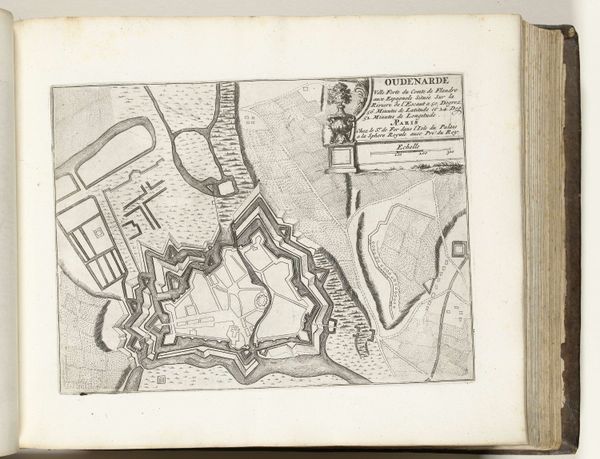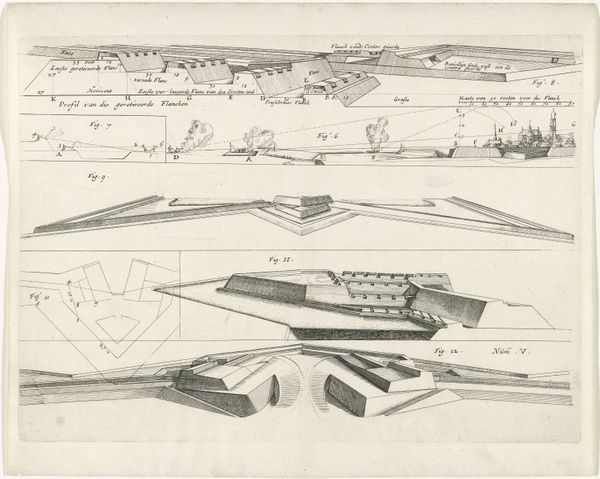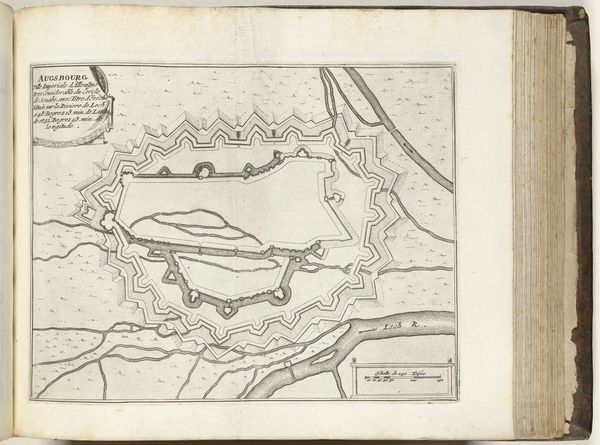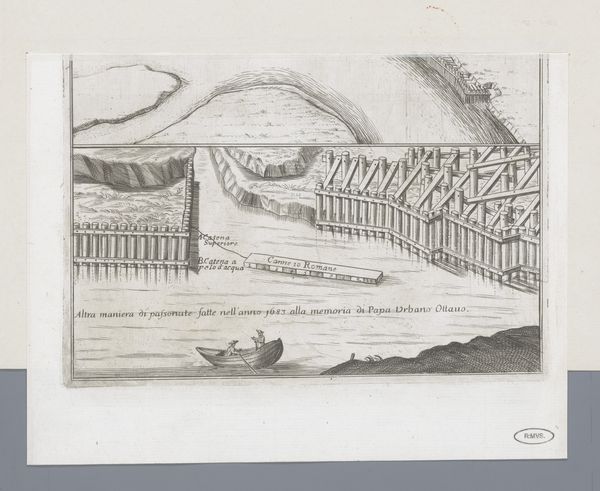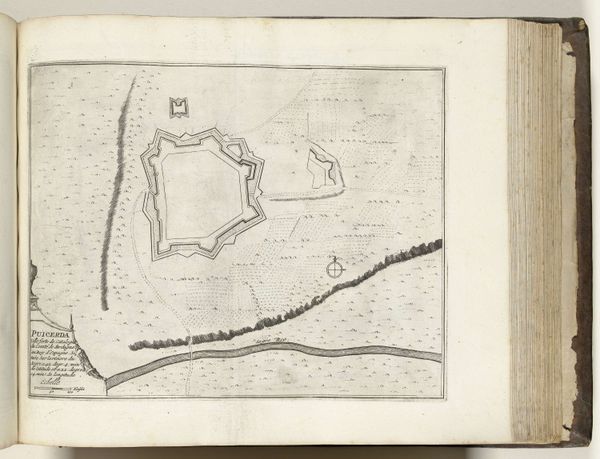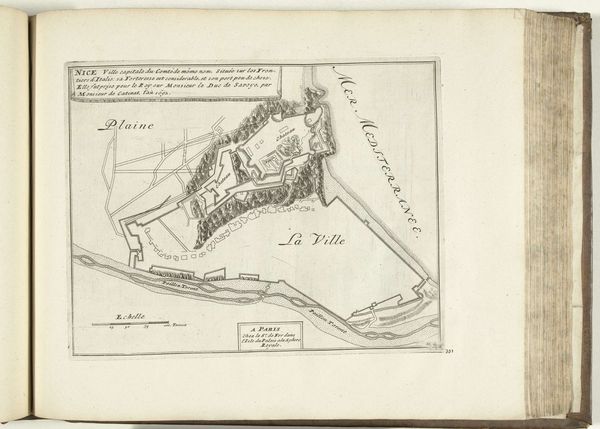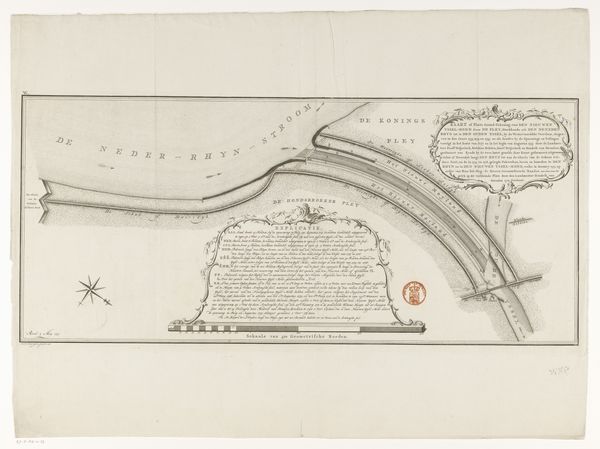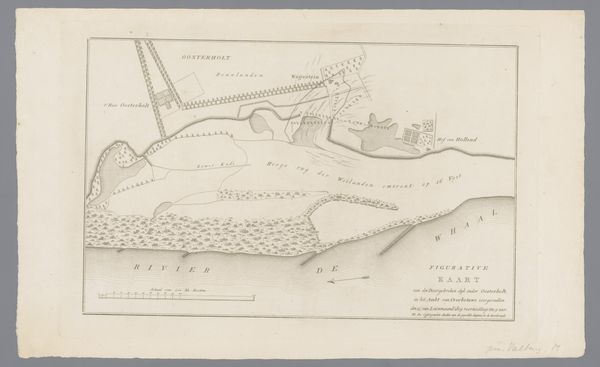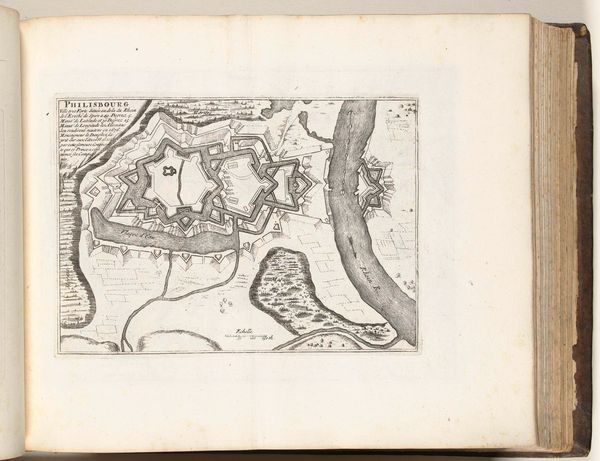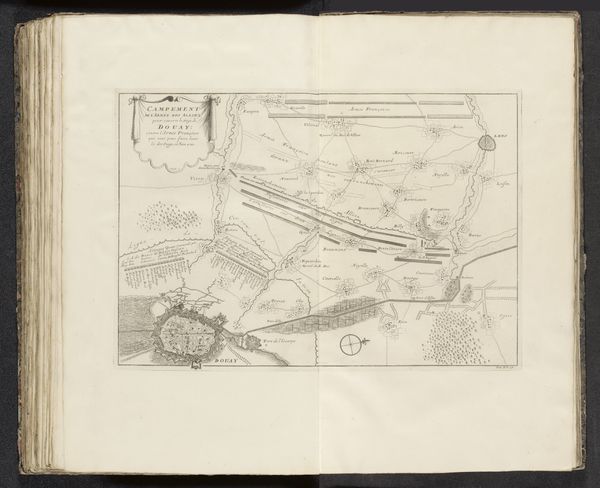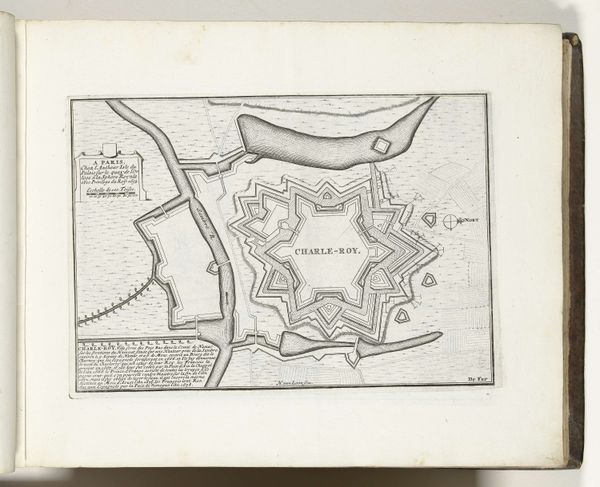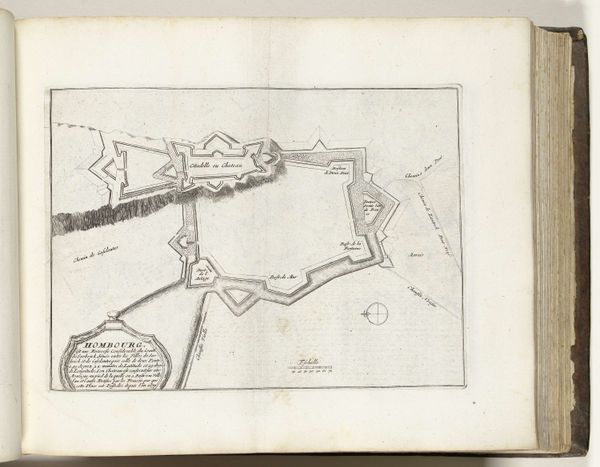
drawing, paper, engraving
#
drawing
#
landscape
#
river
#
paper
#
geometric
#
line
#
cityscape
#
engraving
Dimensions: height 170 mm, width 230 mm
Copyright: Rijks Museum: Open Domain
This print shows damns in the same river in 1670 and 1682. It was made by an anonymous artist, using the technique of etching. Looking closely, you can see how the incised lines articulate the mud, the water, and the defensive architecture. The print would have been made by applying a waxy ground to a copper plate, then drawing through it with a sharp needle to expose the metal. This was then submerged in acid, which bit into the lines. It's a relatively efficient way of making an image, and easily repeatable, so prints like this were an ideal medium for circulating information. Consider the amount of labor represented here. Not only the anonymous artist, but also those who constructed these dams, the soldiers who defended them. This image shows an early modern version of infrastructure, and its role in the military-industrial complex. Paying attention to the processes and social context of making reveals the full meaning of this artwork, challenging our traditional views of art.
Comments
No comments
Be the first to comment and join the conversation on the ultimate creative platform.
